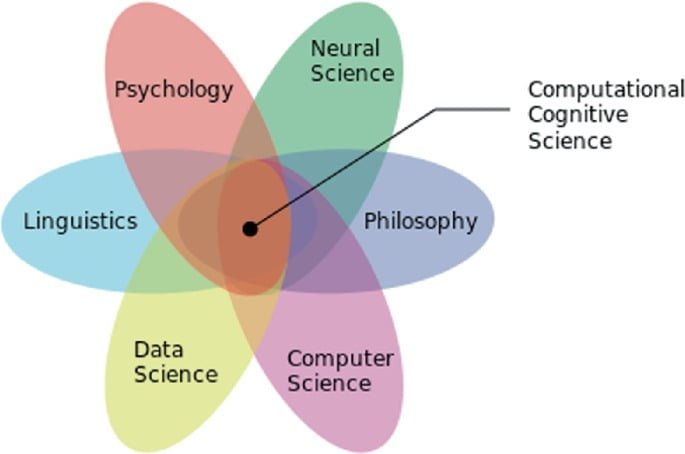Cognitive science’s role in Artificial Intelligence is essential for several industries. These fields include education, operations research, human-factors engineering, and human resource management.

Theoretical
Cognitive science in artificial intelligence deals with understanding the human mind and extending it to computerized systems. It uses both theoretical ideas and experimental techniques to understand these processes. This knowledge can be applied to various fields, from education to healthcare to finance. It is also helpful in understanding how the brain works, which can help develop better treatments for neurological disorders.
Many cognitive scientists believe the mind is like a computer, with mental representations analogous to computer data structures and computational procedures operating on those structures. This is known as the mind-computer analogy and is today’s dominant view in cognitive science. It also assumes that the mind is a complex system that contains higher-level mental representations, such as concepts, images, and analogies.
The main goal of cognitive science is to create machines that can perform tasks usually performed by humans. It uses a variety of methods to achieve this, but most of these involve the use of controlled experiments with human participants. These tests are designed to measure various cognitive functions, such as the speed at which people think with mental images and the ability to solve problems using analogies.
The field of cognitive science has important implications for the design of computers and other technological systems. For example, it can be used to ensure that computer programs are user-friendly.
Artificial Neural Networks
Artificial neural networks are a computer model of a brain-like system of interconnected processing units, like neurons. They are based on the principles of biological neural systems, particularly Hebbian learning (Heck’s Rule). This means that changes in the strength of conductivity between neurons in a brain can strengthen or weaken an associative link.
The network’s outputs will change by changing the “weights” of connections between processing units—the artificial neural networks learn. Modern artificial neural networks use various learning rules, but all incorporate some version of Hebbian learning. For example, in a supervised learning algorithm, the weights of connections between neurons are modified as the algorithm is presented with examples of a given task, which helps the system “learn” to recognize patterns.
Similarly, unsupervised learning is possible by providing the artificial neural network with input patterns and allowing it to develop sensitivity to statistical regularities in these patterns. Using these techniques, researchers have developed AI systems that can perform various tasks, including speech and handwriting recognition.
These AI systems have even surpassed human performance in some cases. However, it is estimated that it will take many more years to have artificial intelligence that can be indistinguishable from a human mind and brain. This will require further technological advances, such as nanotechnology and cognitive science AI theories, that can enable a complete understanding of the human mind.
Human-Computer Interaction
Cognitive science focuses on understanding how the human mind works, including memory, attention, perception, language, problem-solving, and decision-making. It is a multidisciplinary field that draws on insights from psychology, linguistics, neuroscience, philosophy, and computer science.
Traditionally, the field has used an information-processing approach to understanding cognition. Cognitive science aims to develop algorithms that can replicate intelligent behavior, such as learning, reasoning, recognizing images, and processing natural language. It also applies to real-world problems, such as improving education, healthcare, and human-computer interaction.
Cognitive scientists use various methods, including experimental psychology, neuropsychology, computational modeling, and observational studies. Cognitive systems must be able to adapt and adjust as the data and environments change. They must be able to digest massive amounts of structured and unstructured data, identify patterns, predict future behaviors, and model possible solutions.
They must also be able to interact with humans, other machines, and other sensors and processors. This requires cognitive science to be integrated into HCI research and vice versa. It is essential to understand this connection because it will help develop more intuitive systems that people can easily interact with and understand.
Machine Learning
Cognitive science relates to AI in several ways. Its applications transform the world, enabling people to interact with technology more naturally and intuitively. Moreover, it enables us to understand the human mind and brain better. The most prominent cognitive science application is machine learning. It uses pattern recognition, data analysis, and other techniques to teach computing systems how to solve problems.
This is done by analyzing large amounts of structured and unstructured data. The system then learns to predict future events based on previous experiences and data. It also becomes more accurate as it processes new information.
This type of learning can be used in areas like sentiment analysis, risk assessment, and face detection. It has also found use in other fields such as education, business, and healthcare. The process is a crucial part of the human-computer interaction and artificial intelligence field. There are some artificial intelligence tools are used to enhance. Another central area of cognitive science is behavioral sciences.
The field focuses on developing an empirical theory of the mind that can be applied to human-computer interactions. It also reveals the factors influencing our thoughts, perceptions, and behavior. It involves various methods, including psychological experiments, brain studies, and computer modeling. It also aligns diverse outlooks and disciplines, such as psychology, philosophy, linguistics, and neuroscience.